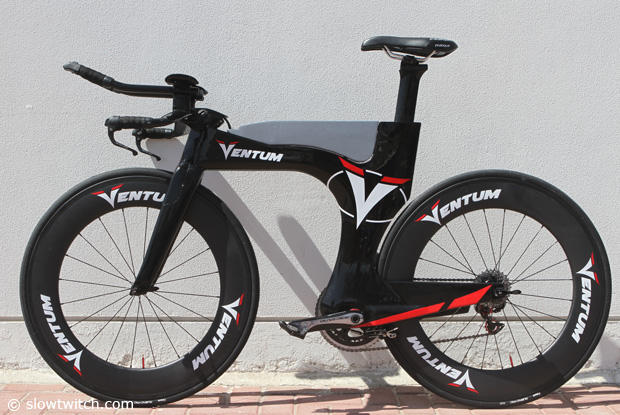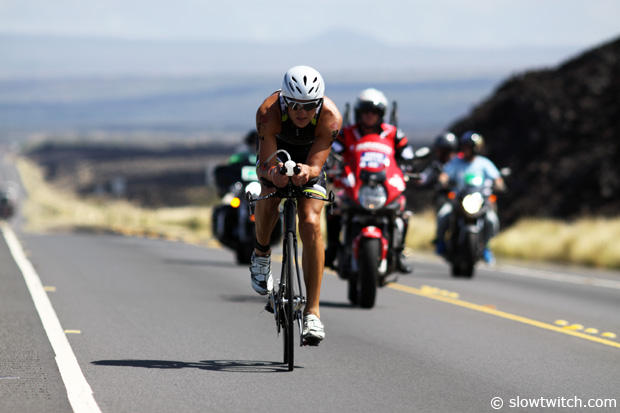You asked and Ventum answered
Our readers posted several questions about the new Ventum bike and we added a few. Most of the questions posted were answered – but not all. Questions about finish could not be answered because the decision had not yet been made, and specific CDA numbers were also not revealed at this time. We spoke to Diaa Nour and Jimmy Seear and depending on the type of question one or the other responded, and here is what was said.
ST: Thank you for your time.
Jimmy: It’s our pleasure. Thanks for having us, Herbert.
ST: The corporate headquarters for Ventum is where?
Diaa: Ventum’s headquarters are in Miami Beach, FL. That’s where the business and operations side of things happen. That being said, our team is spread out all over the World.
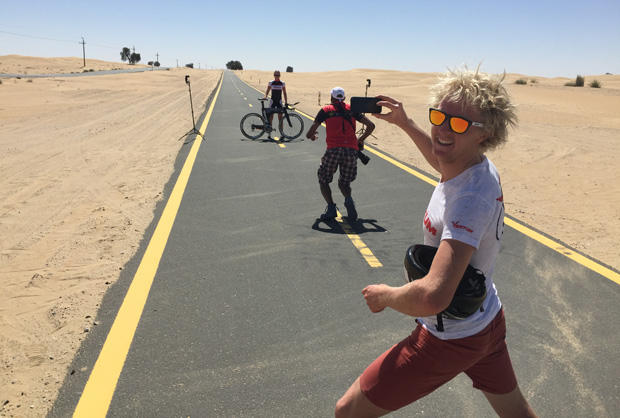
ST: Who are the folks who make up the brain trust of Ventum?
Diaa: Our team seems to be growing every day but there are four key individuals that make up the pillars of this venture. James (Jimmy) Seear and Peter Seear head up engineering and technical design. All our engineers, from structural to aerodynamics report to them and they are the main reason why the bike is so great today. Jimmy is an Australian Professional Triathlete and Former World Under 23 Number 1 while Peter is a seasoned businessman and mechanical engineer with world records lined up to his creations. Neville Mehra is our head of IT and global digital strategy. I’m still not sure how I was allowed in but I think it has something to do with my good looks.
ST: When did you guys first get together and decide to create a new bike and a new brand?
Jimmy: Peter and I had played around with bike design and construction for years. It began as a hobby, but once we started to gain some momentum with the design and see many opportunities to save time and drag, we took it more seriously. We managed to get invaluable guidance from aerodynamic and structural geniuses. After a lengthy design process and then hand laying some prototype frames in Australia we went to the wind tunnel. We knew we were onto something great when we saw the results. It was only when we talked to Diaa last year that we decided to scale up the project and bring it to market.
ST: How did you decide to pursue the general Lotus idea?
Jimmy: Designing a new bike is an iterative process. First, Peter and I sat down and reviewed all kinds of previous bike designs. We sketched many ideas down and then we would discuss what worked and what didn’t — from an aerodynamic stand point as well as the structural side — a great bike has to be both fast and rigid. Once we started to get a general direction we continued to design the frame on CAD. We conducted CFD (computational fluid dynamics) and FEA (Finite Element Analysis) on the design to further refine the initial frame design. Finally, after all the simulations, we arrived at a design we were happy with, and we hand built the first prototype. It was then tested structurally with strain gauges until failure to show the weak points of the frame. It's difficult to build something by hand, only to turnaround and break it on purpose, but it's an important part of the process. Using the data from the structural testing, we tweaked the design further and then built another prototype. This frame was put through some road riding to get a feel for how the bike handled. It was also tested in the wind tunnel and gave us some great numbers.
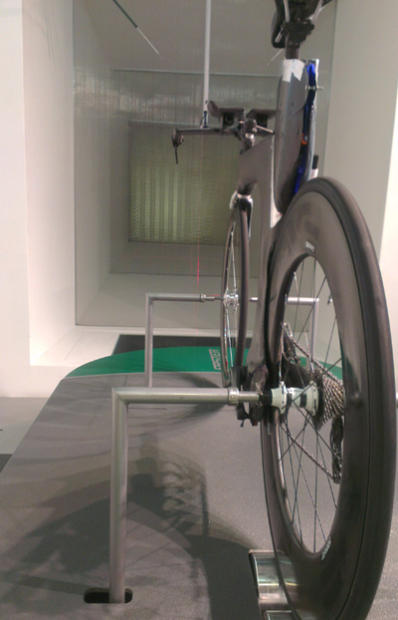
ST: How much wind tunnel time have you spent with the Ventum?
Diaa: Countless hours. We are constantly in the wind tunnel because this bike was born in the wind tunnel. Ventum is all about speed and aerodynamics. We use wind tunnel data to guide on any further design improvements to the bike. In fact we are about to take 3 of our pros to 2 different wind tunnels this month to run more tests. Our name (Ventum) means wind in Latin so you can say we are a little obsessed with it.
ST: When the bike was first introduced some fairly bold statement was made. “Ventum’s prototype outperformed the industry-leading bicycle by more than 20 percent in preliminary wind tunnel testing.” What data can you give us that would back up your claim?
Jimmy: That statement refers to a round of wind tunnel testing we conducted last year, with an earlier prototype of our frame. This was done head to head with a Cervelo P5 (with and without a rider) as the benchmark and yielded that initial feedback. Now we test against a few other brands as well. We run -20 through to 20 degree yaw angles and move in 2.5-degree increments. We run multiple shreds to take away any inconsistency. All the bikes have the exact same position set up and run the same wheels. We want to take away any variable that could alter the data from the frame.
ST: Talk about your test protocol?
Jimmy: We initially focused on bike only testing to help us refine our design. Now we are focused on testing real-world scenarios — that means with a rider, water, and nutrition onboard — to help us obtain even more comprehensive data. Most water bottles cause a huge amount of drag and this can cost you minutes and since our bottle conforms to our frame it actually makes us quicker than without it.
There are always skeptics about wind tunnel protocols and that’s why we decided to conduct our tests using several tunnels. We will soon release some independently verified data that will speak to this. Besides being the fastest, we also want to be the most transparent.
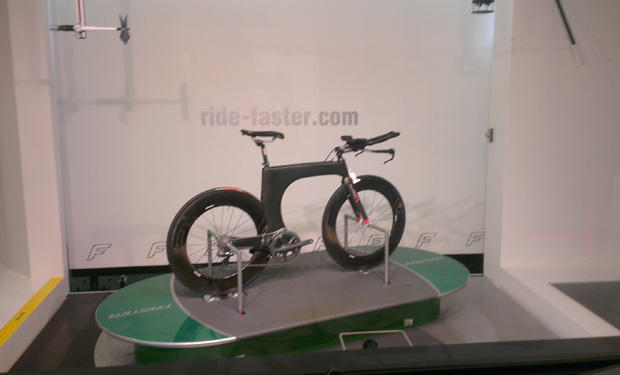
ST: Did you use a person or a dummy for with rider tests?
Diaa: We always test using a person. For example, our upcoming test will run 3 different riders through the same testing procedure to see the correlation between different riders.
ST: How did you address torsional rigidity?
Jimmy: From our first generation prototype to now we didn’t have much flex in the frame. We did want to increase the torsional flexion in the top tube. When we came up with the conformal water bottle that helped add a lot of rigidity in the top tube. We put a lot of emphasis on maintaining section modulus throughout the frame envelope to ensure that the strength is there. A lot of design work went in to eliminating stress concentrations and the final shape is smooth and blended which benefits both aerodynamics and frame load carrying capacity. We have already tested the frame through the full suite of EU test procedures and it passed with flying colors. We also conducted exhaustive strength deflection tests including torsion, bending and fork impact capability. It passed all tests and this allowed us to focus on aerodynamic form and reducing weight.
ST: What date is realistic at this point for customers to be able to buy a Ventum?
Diaa: When it's done. Not a moment sooner. There is a ton of demand, but we are not going to rush this. We want to bring the best bike to the market that we can possibly make. Doing it right the first time around is crucial for us. That being said, we're almost there. We have our pros and our engineers conducting some brutal road testing and analyzing feedback. Right now it looks like the fall.
ST: What distribution model do you have in mind?
Diaa: Good question. We're still figuring that out. We will sell bikes directly. We've had questions about pre-orders, but we're not accepting any just yet. We will also partner with some of the top bike stores around the world that cater to the Ventum customer.
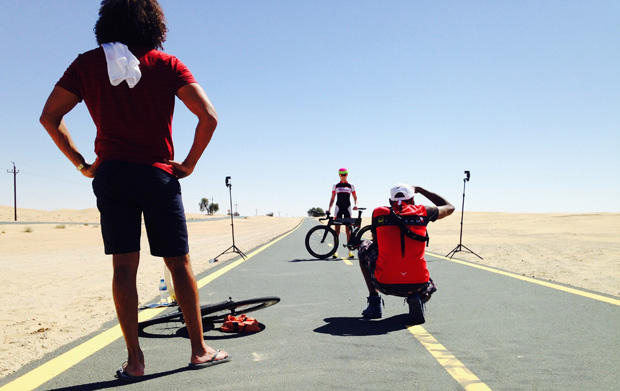
ST: So how much should a consumer save to get a frame set, and what will come with it?
We haven't decided on pricing yet, but we know that we will need to be competitive. Bikes will come with different component options from Shimano. The frame can run either mechanical or electronic group set. ISM is our preferred saddle and we are still deciding which wheels we are going to use. The fastest Ventum frame/wheel combo in the wind tunnel is likely to win that race. Customers will also have the option to purchase the frame only.
ST: How many different frame sizes are planned?
Diaa: We currently have 4 frame sizes designed and if there is a demand for a size outside our fit range then we will look into expanding are sizing options.
ST: The liquid storage unit on the top tube looks voluminous, but how much can it hold and how will it vary by frame size?
Diaa: The Conformal Tank holds 1.4 liters or 2 standard water bottles. It has a place to fill on the go and a straw between your arms. Currently colors available are red, clear, gray, and black.
ST: The space behind the bottom bracket seems very tight. How wide of a rim and tire have you tested it with?
Jimmy: We have run Zipp, Mavic, Enve, Shimano Disc, Mavic Disc, and Zipp Disc in the frame with no issue of rubbing. We have a test rider who puts out some very high power numbers putting the bike through the paces in all out sprint scenarios to make sure there wont be any rubbing issues. With the adjustable rear dropout you could run 28c tires in the bike.
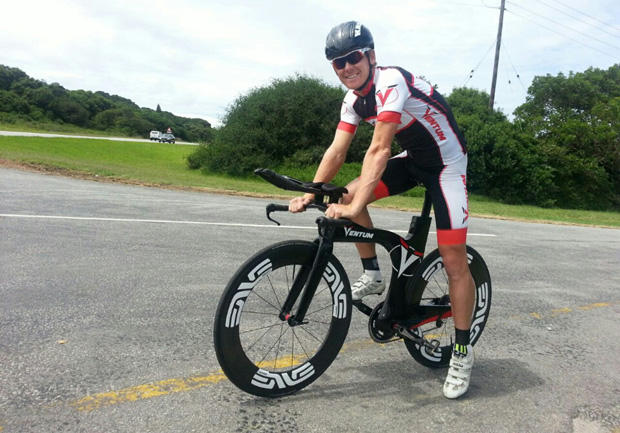
ST: Will it have its own fork or will you choose from existing ones?
Jimmy: To be determined. We have been using an open-mold fork for our initial testing, but we have also designed several of our own forks that we will continue testing
ST: Is there anything else we should know?
Diaa: Yes. First of all, thank you for doing this. We value feedback from the community, even if we can't answer every single question posed via the Slowtwitch forums. We are well aware that we have set expectations very high, but rest assured that we are working tirelessly to build the world's fastest triathlon bicycle. That is our mission and we will see it through.


